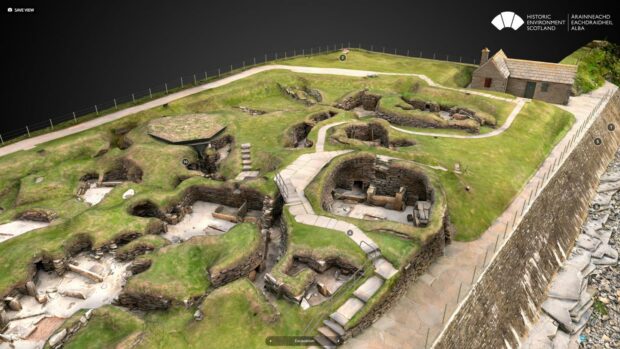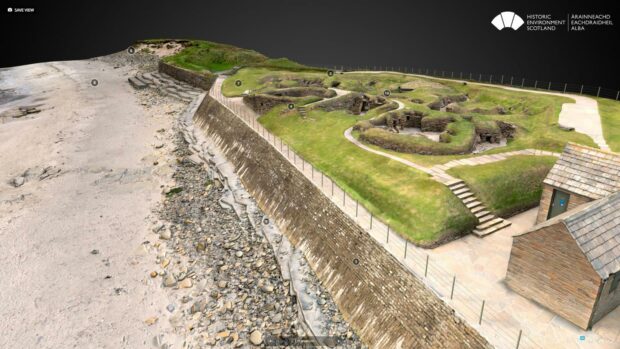New 3D scans of Skara Brae will help towards understanding the impact of climate change on the Orkney site.
Historic Environment Scotland (HES) manages the site, which is more than 5,000 years old, and has created a 3D scan to allow visitors from around the world to explore it.
The World Heritage Site pre-dates the Pyramid of Giza and attracts scores of visitors.
Now HES has created a scan of the Neolithic site on Sketchfab, to allow visitors to see areas that are not normally accessible – or to enjoy it all year round.
This includes House 7, which is the best and most complete dwelling at Skara Brae.
Using modern laser scanning and overlapping images, the creators of the virtual site were able to capture a realistic environment.
In addition to showing the interesting history of the site, the model also allows visitors to witness the impact of climate change has had.
The site was discovered 170 years ago following a violent winter storm and since then coastal erosion, rising sea levels and increasingly frequent extreme weather have threatened the site.
Help to understand and tackle climate risks at Skara Brae
In response to this, HES has maintained the important sea wall near the site which protects it from heavy waves and water damage.
Since 2010, HES has scanned the area every two years to monitor the change in coastline at the site.
The new virtual model will go towards helping understand the changes occurring at Skara Brae and the best methods to protect a part of ancient history.
It will also allow for people from across the globe to sample Scotland’s Neolithic past from their home.
Al Rawlinson, head of digital innovation and learning at HES, said: “We’re really pleased to make this 3D model of Skara Brae available, which not only offers an innovative way to access this unique site, but one which also showcases how we are using cutting-edge technology to monitor and maintain our historic environment.
“Digital technology such as this will be a vital tool to help us better understand and manage the climate risks to our historic places, and to share their climate stories.”

